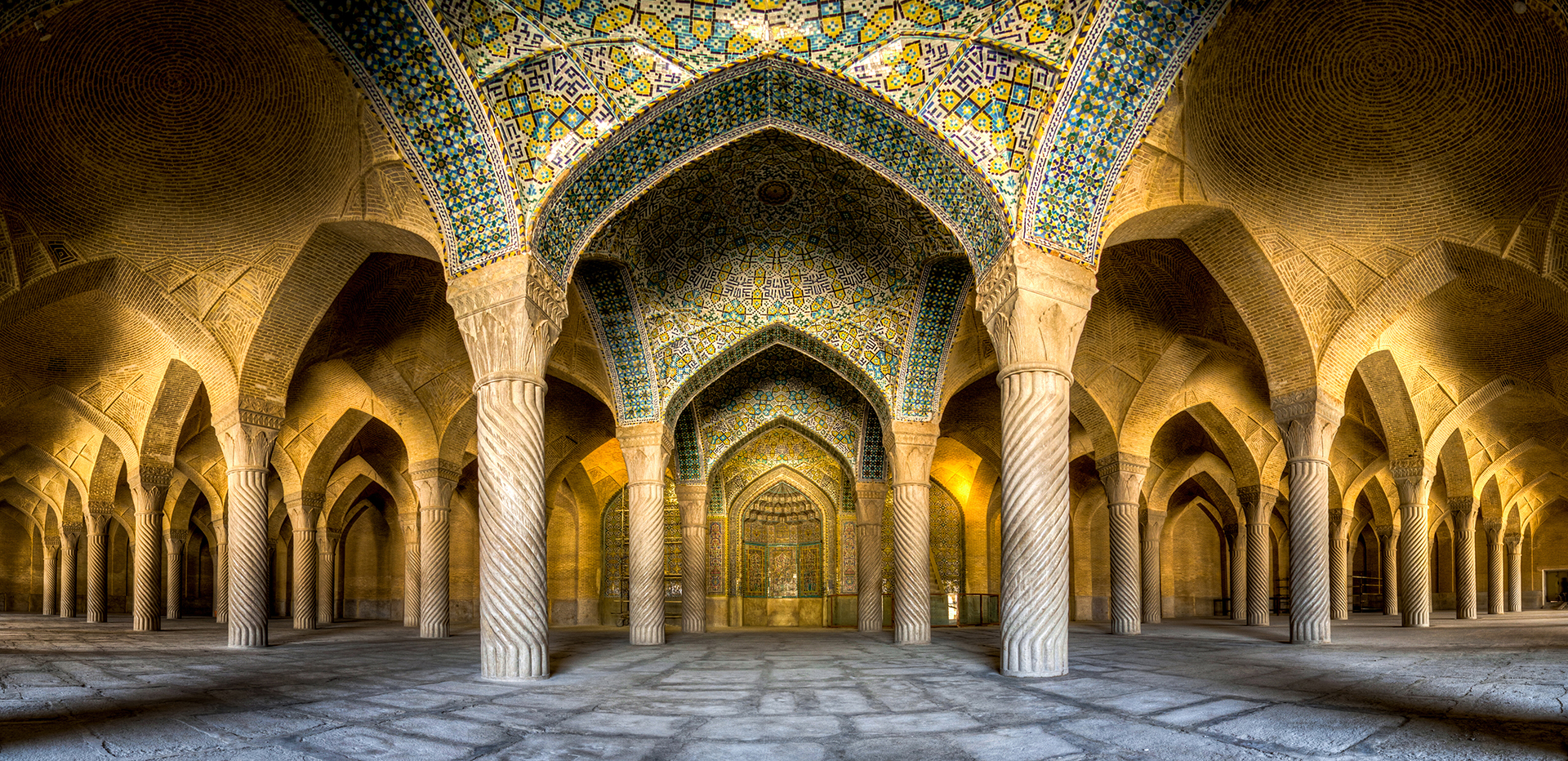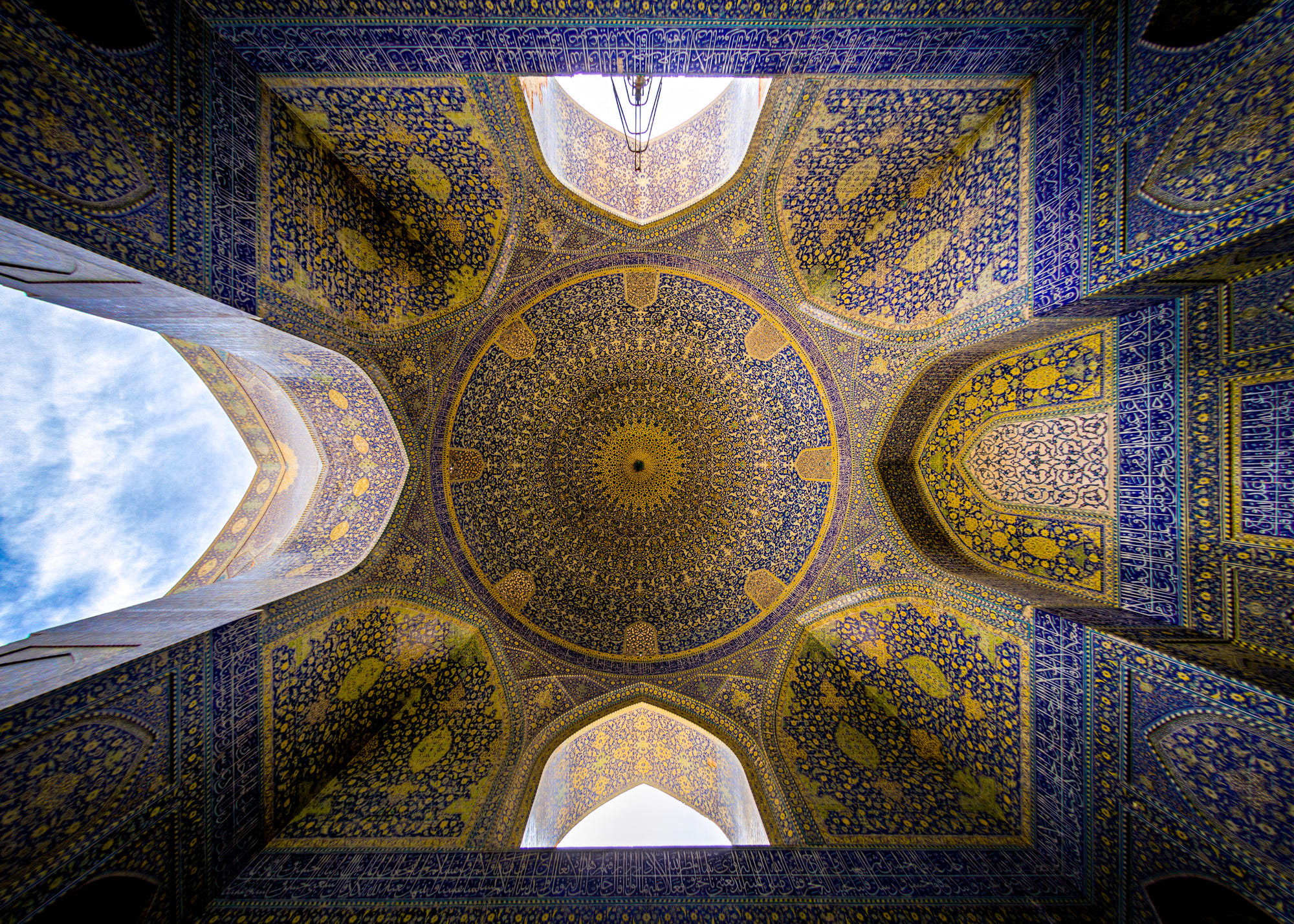GEOMETRIC PATTERNS OF SPIRIT & GRACE

Geometry is shown in high glory in the elaborately patterned gorgeous architecture of ancient mosques. Never have they been captured more beautifully than in the breathtaking photographs of award-winning photographer Mohammad Reza Domiri Ganji.
While there is a fascinating spectrum of style, with patterns of varying degrees of intricacy, boldness, and complexity in mosques designed for different Islamic religious bodies and sects. Ganji, a native of Iran, focuses solely upon Iranian or Persian Mosques, which are among the most heavily patterned. Their geometry sings.
Geometry is a branch of mathematics that works with shape, size, and relative position with respect to the properties of space. The word, “geometry,” comes from the Ancient Greek: γεωμετρία; geo- "earth" and -metron "measurement").
Looking back into its origins, we find that geometry arose independently in a number of early cultures, dating as far back as the 6th century BC, with early recordings documenting it use in ancient Mesopotamia and Egypt in the 2nd millennium BC.We see that Islamic scientists expanded on early Greek concepts during the Middle Ages and began to apply it to many fields, including art, architecture.



Ganji, an Iranian physics and architecture student also works as an amateur photographer. He has applied innovative techniques to photograph Iran’s mosques in a new way, presenting surveys of each of their intricate patterns and structures within a single photo. The images have a kaleidoscopic effect.

Most of Ganji’s photos offer an extreme wide angle of view. I use wide angle lenses and sometimes panoramic technique so I can show all the details in one photo. They are shot in high dynamic ranges. His latest collection, named “Historic Persian/Islamic Monuments and Temples” has been exhibited around the world.

The photos highlight the beauty of Iran’s ancient mosques, showcasing their symmetry and exceptional detail. They are not only technically brilliant, but they also do what most photos of these buildings have not been able to achieve.

Due to restrictions on tripods, it is very difficult to get permission to shoot inside these mosques. In addition, they are usually crowded with people, so it is normally impossible to get a “clean” view of the architecture. As a result, there are very few images that show the patterns and structures in their absolute pristine forms.

Ganji looks for symmetry in the mosaics as well as in the columns and other architectural elements. He pays attention to the light the filters in from the stained glass windows, as it adds another layer to the patterns on the walls, ceilings and floors.

With conflict and danger of destruction ever-prevalent in the country of Iran, it is possible that some, or even all of these historical sites will not exist in 20 years. Ganji’s photos serve an important document that can carry forth into the future.

Ganji has favorite equipment: Canon EOS 7D for its speed and ability to render contrast, Tokina 11-16mm f/2.8 for its sharp wide vision, Sigma 8mm f/3.5 fisheye for its 360 panoramics, Nikon D810
for its high dynamic range and 36mp of image size, Nikkor 16mm f/2.8 fisheye for its low light and night photography excellence, Nikkor 50mm f/1.4 for large scale night shots, Manfrotto 055 Carbon tripod
because it’s firm and light, Nodal Ninja 3
for its panoramics, Promote control for HDR images and even an iPhone 6s
64gb. He uses Adobe Lightroom to edit his photos.

Ganji's mosque photos have been published by CNN, BBC, Daily Mail, and National Geographic, among others.
Ganji lives in the northern city of Babol and studies physics at University of Mazandaran.

Read more about Beautiful Patterns all this week on BeautifulNow. And check out more beautiful things happening now in BN Wellness, Impact, Nature/Science, Food, Arts/Design, and Travel, Daily Fix posts.


Do you have amazing photos? Enter them in this week’s BN Photo Contest. We run new creative contest every week!

